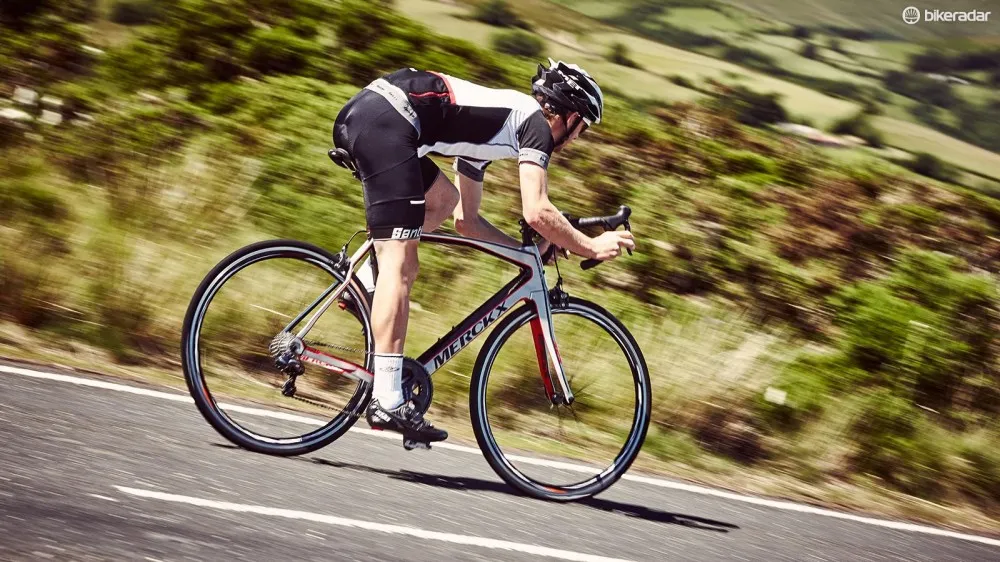Eddy Merckx is a Belgian two-time three-cushion billiards world champion. (Oops, wrong one.) Nope, cycling’s Monsieur Merckx is one of the best sportsmen ever. And though a much overused word, Eddy deserves the ‘legend’ designation.
The 525 represents the number of his wins, and if you want to know about bike envy, you should try riding this fella – in our experience, even bike shop employees may swoon just a little.
- Highs: Swoon-inducing looks, a superbly balanced ride and Shimano Ultegra Di2
- Lows: The 8kg weight and mid-range Fulcrum wheels
- Buy if: You want one of the most composed rides around and are prepared to pay for the experience
It’s not a bike you can miss. Even by today’s standards, its down tube and BB86 bottom bracket shell are monsters. Throw in deep, asymmetric chainstays, zigzag seatstays and forkblades that kick forward at the dropouts and you have one distinctive machine.

One of the stiffest head tubes around, it's claimed
Unusually in our age of ultra-light bikes, Merckx espouses ‘speed, stiffness, stability and safety’ first, which is reflected in a weight that isn’t that light and in the 525’s geometry. The head tube is as short as you’d expect on a road bike, but compared with the Specialized Tarmac and Trek Madone, for example, frame angles are a degree or so shallower and the wheelbase longer, which certainly aids stability.
The asymmetric frame is designed to cope with the uneven forces put through a bike's collection of tubes, and Merckx’s own tests suggest its head tube and bottom bracket stiffness are equal or superior to anything else on the market; our less scientific testing – riding lots – did nothing to suggest otherwise.
The 525’s super-stiff and responsive ride never lets you forget this is a pro-level racing bike, and something you can feel when you put the hammer down. All that beefiness comes to the fore in a whoosh – instant acceleration!

Descending is a confidence-inspiring experience thanks to the rock-solid front end
The big-is-beautiful head tube and all-alloy cockpit mean the front end is rock solid too. The result? Great descending with the sense that you’re always in control. And though race- rather than endurance-orientated, its comfort is better than we expected. It’s not plush, but fine even for long days.
Some of the Merckx’s cost goes down to the Ultegra Di2 groupset, with its excellent brakes and slick lazy-man’s shifting. While a lot of testers get blasé about Di2, this one doesn’t. True, cyclists weren’t clamouring for battery-powered shifting when Shimano launched Di2, but it is still one of the biggest developments in road biking this century (best forget Mavic’s doomed attempts in the 1990s).
It works superbly, with the front derailleur in particular a thing of science fiction beauty, with a buzz straight out of Star Trek as it shifts and self-trims. Do you need it? No. Is it fantastic? Definitely. It’s also a boon for riders with smaller hands, as the effort required to change gear is tiny. (Though do make sure you remember to charge the seatpost-mounted battery first. A lesson learnt after an initial single-speed outing – albeit a very impressive one.)
All in all, you’re perhaps paying a little more for the name and exclusivity here, and we’d have preferred better wheels than the specced Fulcrums, but you're still getting a high-quality bike boasting one of the best rides out there – and a frame with a lifetime guarantee.




